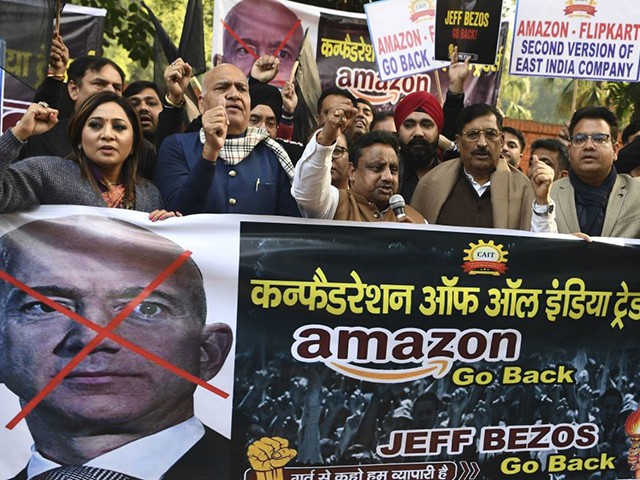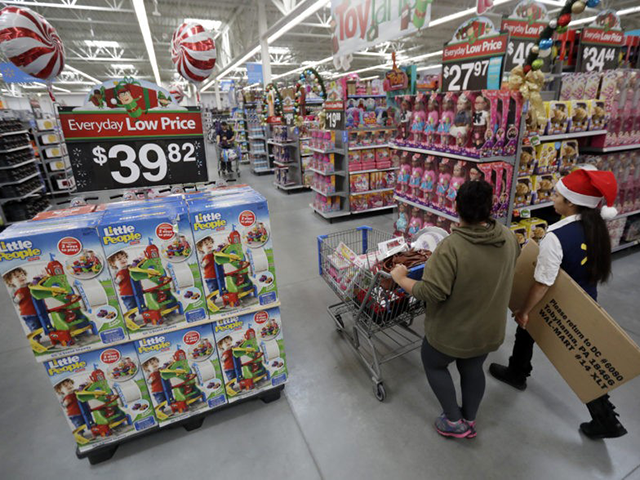American retail titan Walmart announced Sunday that it will begin importing toys, shoes, and bicycles from Indian firms, as well as increasing its purchases of food and health products.
The announcement followed a meeting last week between Walmart CEO Doug McMillon and Indian Prime Minister Narendra Modi in New Delhi, where McMillon confirmed his company plans to ramp imports from India up to $10 billion a year by 2027, a growth trajectory Walmart first announced in December 2020 that would roughly triple Walmart’s current imports from India.
Walmart also held a virtual meeting with Indian toy manufacturers to ensure their products measured up to Walmart’s safety standards.
A company spokesperson said:
Walmart’s efforts to expand sourcing from India involve strengthening collaborations with existing suppliers and facilitating the development of new suppliers in categories such as food, pharmaceuticals, consumables, health and wellness, as well as apparel and home textiles. We are also exploring opportunities in the areas of toys, shoes, and bicycles.
India’s WION News saw the announcement as a success for Prime Minister Narendra Modi’s “Make in India” initiative to boost manufacturing and exports. India’s revenue from toy exports, for example, has increased from $96.17 million to $326.63 million over the past eight years.

Prime Minister of India Narendra Modi addresses the United Nations General Assembly at UN headquarters on September 27, 2019, in New York City (Photo by Drew Angerer/Getty Images).
Mint noted that India has “increased the import duty on imports of toys from 20% to 70%, in order to discourage the imports and boost the domestic manufacturing of toys.”
India may also add a production-linked incentive (PLI) for the toy industry, a scheme that essentially rewards companies for drastically increasing production but only really works if the increased output is sold through. The government is wary of companies churning out poor-quality goods that pile up in warehouses while the manufacturer collects PLI subsidies, so applicants for PLI program must meet certain quality standards and prove they can find buyers for their goods.
In the case of the toy industry, PLI proponents say the subsidies would help smaller local companies that produce the components needed for exportable toy products and would help India reach a critical “mass” of production that would bring in more foreign customers. Some Indian toy manufacturers currently obtain components from China, but they believe a PLI program would help Indian component makers compete with Chinese sources.
Walmart is making a play for India’s retail customers, in addition to buying more from Indian manufacturers. The Financial Times (FT) reported on Friday that Walmart is “beating Amazon in the battle for online customers in India,” a big payoff for Walmart’s eyebrow-raising gamble of $16 billion to buy a majority stake in the Flipkart e-commerce platform.

Traders hold placards during a demonstration demanding the closure of online shopping platforms Amazon and Flipkart in New Delhi on January 15, 2020 (SAJJAD HUSSAIN/AFP via Getty Images).
“Did Walmart overpay for Flipkart at that time? Yes. But were they able to get value for their money in the subsequent years? Yes,” Abhishek Goyal, a former executive at a firm that was one of Flipkart’s early backers, told FT.
“Amazon has a significant gap with Flipkart and, potentially, the gap could become larger, making it really difficult for them to bridge it, at least in the short term,” analyst Mrigank Gutgutia of Redseer Strategy said.

COMMENTS
Please let us know if you're having issues with commenting.